In Telok Ayer, a new way to dine in Singapore: Learn while you eat
One-Michelin-starred restaurant Nouri in Amoy Street has a new space, Appetite, where chef-owner Ivan Brehm and his culinary team serve a multi-course menu that explores food history in a novel way.
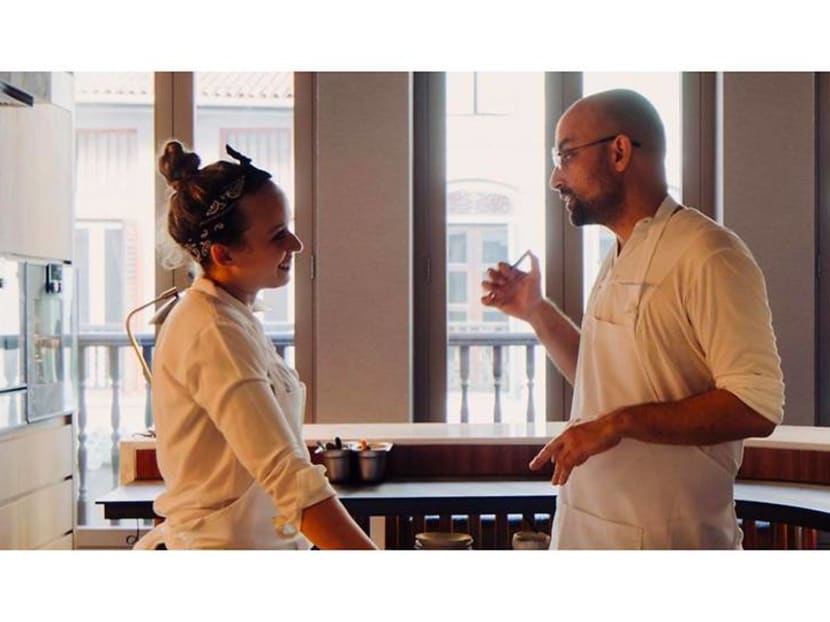
Chef-owner Ivan Brehm and the head of his Appetite culinary team, Ashlee Malligan. (Photo: Nouri)
Did you know that the Chinese language was influenced by the languages of the Turkic and Altaic tribes living around China’s periphery? Or that wheat brought from Europe altered the eating habits of the people of North, Central and South America? Or that as members of the cashew family, pink peppercorns can cause allergic reactions in people with nut allergies?
Me neither, but I do now since I consumed these nuggets of information at dinner one night as part of the R&D Sessions at Appetite, the research arm of, and multi-concept space that sits above, Nouri.

READ> The Singaporean chef serving ‘high-class Hainanese chicken rice’ to Hong Kong diners
Several times a month, diners can buy into these eye-opening meals that take place at the restaurant’s intimate eight-seat counter behind which chef-owner Ivan Brehm and his Appetite culinary team, headed by Ashlee Malligan, serve an eight- to 14-course menu that explores food history in an unprecedented way.
To wit, our dinner featured elements as diverse as rasam and kimchi, skyr and tortilla, with each dish embodying origin stories that take surprising turns. Through a course of crisp, palm-sized appam topped with caviar and served with a mound of beet chutney and mustard, we learn about what Brehm calls “a very deep connection between the Indian empires, Coptic Christian origins and the Jewish diaspora, and how the movement of these ancient religious people enhanced the culinary traditions of places like South Asia”.
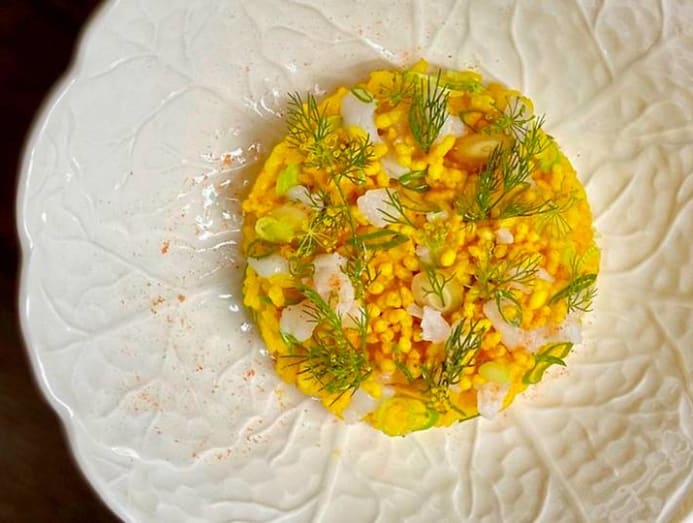
In the package of notes given to diners at the start of the meal (don’t fret, you may peruse them post-meal), a card explains that according to Jewish food writer and historian Gil Marks, “the three separate Jewish communities of Cochin, Mumbai and Calcutta in India have a variation of the hopper as a staple dish amongst them. He therefore speculates that it might have originated with them in the Indian subcontinent”.
Put simply, appam or hoppers could well have begun with the Jews.
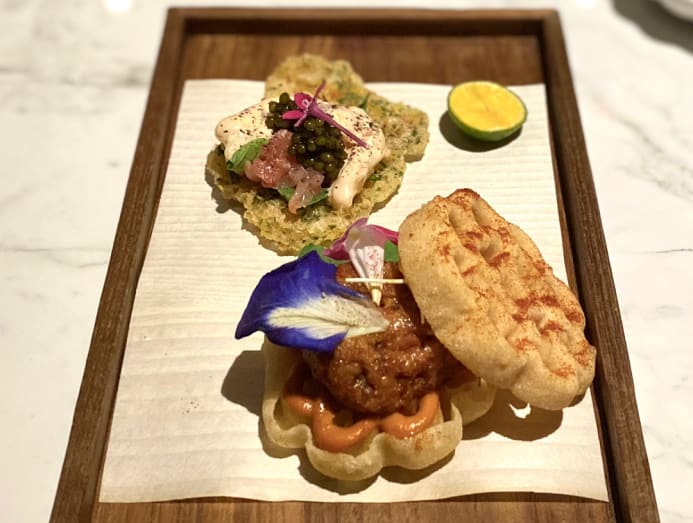
READ> Breakfast Club: Where Singapore’s top chefs go for their morning meal
AROUND THE WORLD IN SEVERAL PLATES
“That connection really explained a ton of stuff for us and opened further questions about their daily use and fermentation, and the link between North African and South Asian fermentation techniques. We were so excited to make that loop,” said Brehm.
“It’s always good to use trademark dishes like appam to talk about historical connections around the world. Dishes like that, which people recognise as very local but now seen from different optics, help open the window for people to see these cross-cultural links and how one tradition is always linked to another.”
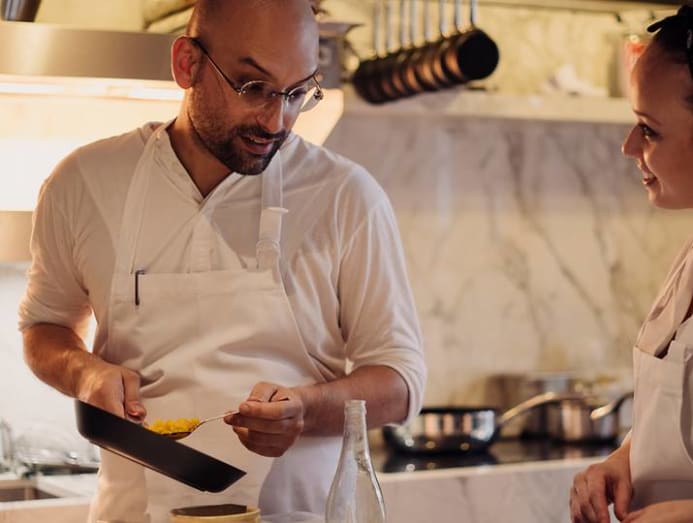
In the same way, kueh rose, that honeycomb cracker familiar to most Singaporeans, provided another opportunity to discuss how things that are now instantly recognisable as Asian staples actually have their roots elsewhere.
Brehm served the cracker made from kueh pie tee batter filled with wagyu nduja made from only Korean ingredients. Alongside it sat a tortilla de camarones or shrimp fritter that is not unlike cucur udang (Malay shrimp fritters).
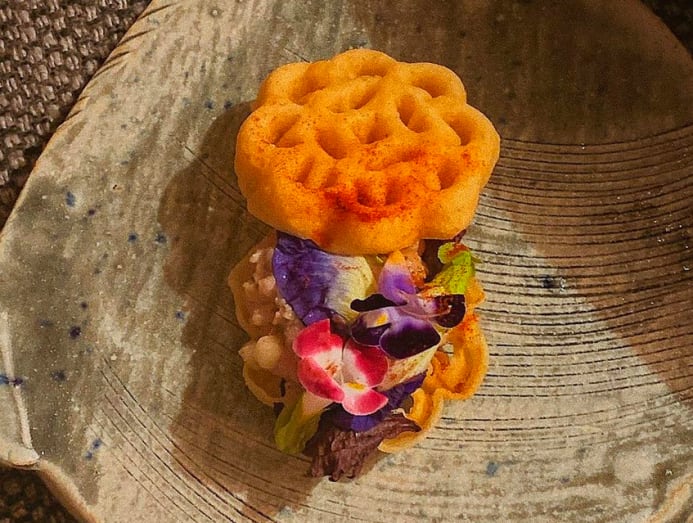
These fried batters are commonly recognised to have arrived in Southeast Asia by way of British and Portuguese influence, but Brehm says that further research revealed that Spanish and Portuguese food traditions owe much to their Arabic invaders.
“The Moors seem to have been the first to introduce fried battered dishes to the Portuguese and Spanish. The tortilla de camarones gave us the opportunity to talk about the origins of tempura, introduced to the Japanese by the Portuguese,” explained Brehm. “Peixinhos da horta (garden fish), tempura’s distant cousin, is an example of several battered dishes of Portuguese and Spanish origin”
”Dishes like [appam], which people recognise as very local but now seen from different optics, help open the window for people to see these cross-cultural links and how one tradition is always linked to another.” – Ivan Brehm
READ> Which new Japanese dining hotspot in Singapore is booked out until August?
EAT AND LEARN… OR JUST EAT
These R&D Sessions often reflect the projects that Appetite’s research team might be working on as part of their consultancies or development work for corporate clients. Or they may simply be explorations into the crossroads-of-culture theme that has long shaped Brehm’s ethos at Nouri.
Research and history may lay the foundations of these meals, but it never feels like a classroom that serves Michelin-worthy food. Even if delving into antiquity is not your cup of vegetable broth, an R&D meal here is much like any other – that is, rooted in exquisite food, warm service and served against an eclectic playlist.
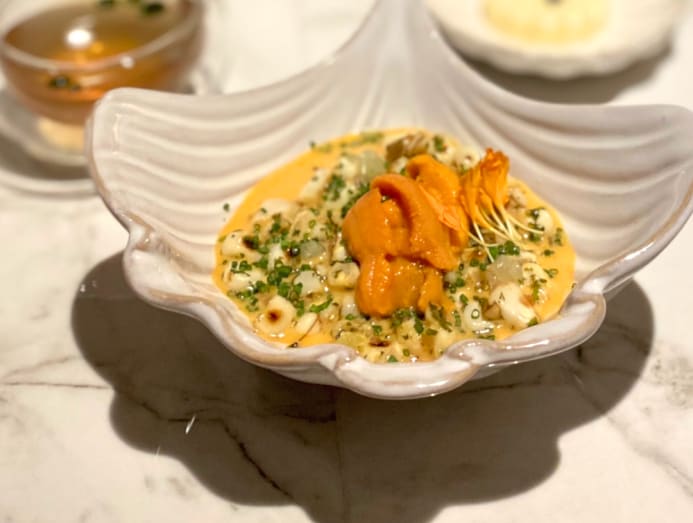
You can choose to ignore Brehm as he waxes intelligently about the Arabic roots of dumplings by nodding and making appreciative sounds as you nibble your food, or engage him by suggesting extrapolations of your own. The meals – available at lunch and dinner, and priced between S$300 and S$400 – are about curiosity, exchanges and discovery.
“This intimate environment allows us very immediate feedback from guests that we wouldn’t otherwise have,” said Brehm. “In exchange for that, as you eat, we give as much information as we can about the things we are working on and why they are important and you then help us to perfect them (with your feedback). Sometimes it happens in unexpected ways, like someone would say, ‘this reminds me of a particular dish’ and we go and research it and it’s dead on the money.
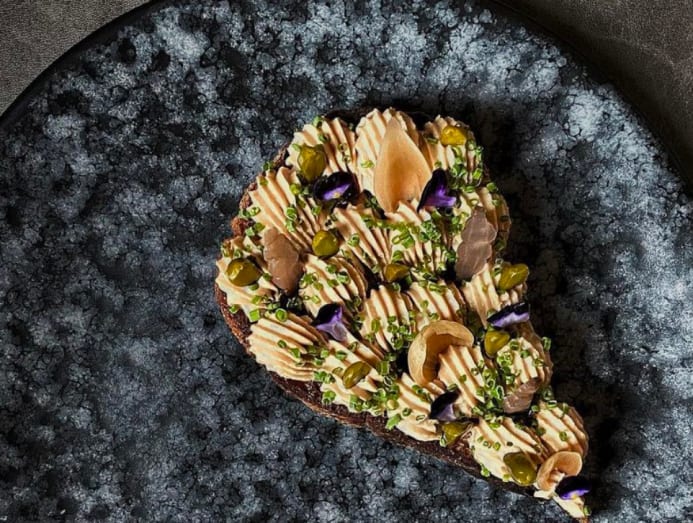
“The overall goal is really to facilitate and get people to question more deeply their notion of identity. I find that especially important today. We have this specific notion of who we are and where we are from, but that’s been crystallised without much scrutiny.
“When we do the deep investigation, we start to realise that nothing is really as it seems. Perhaps we should start looking at one another with a bit more respect, curiosity and openness. That’s the overarching concept behind all our projects, to reconnect people to themselves, to product and to experience in a less transactional and more direct way.”
“The overall goal is really to facilitate and get people to question more deeply their notion of identity. I find that especially important today.” – Ivan Brehm
To book, visit Appetite’s Instagram page where R&D Session dates are announced a month in advance.





